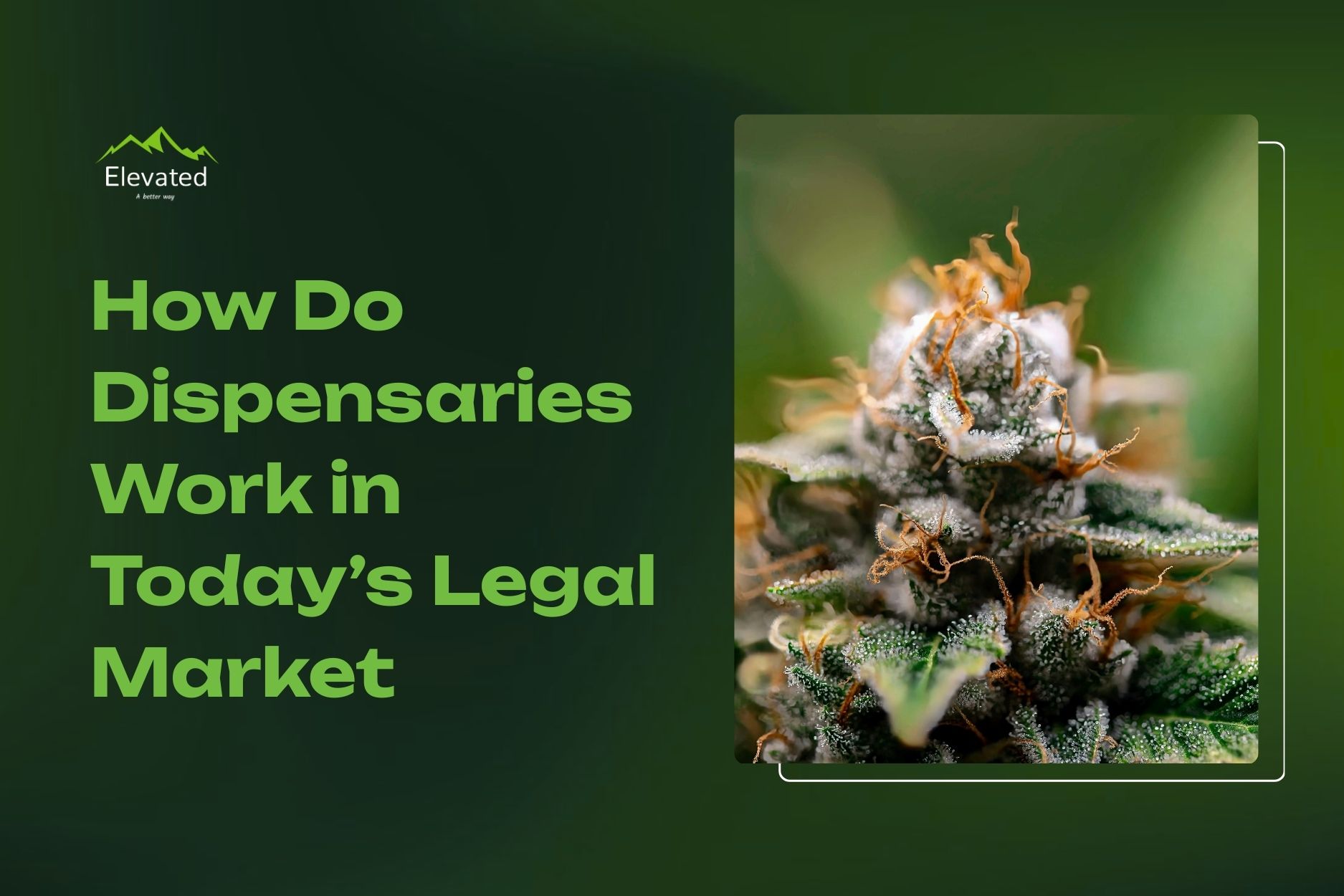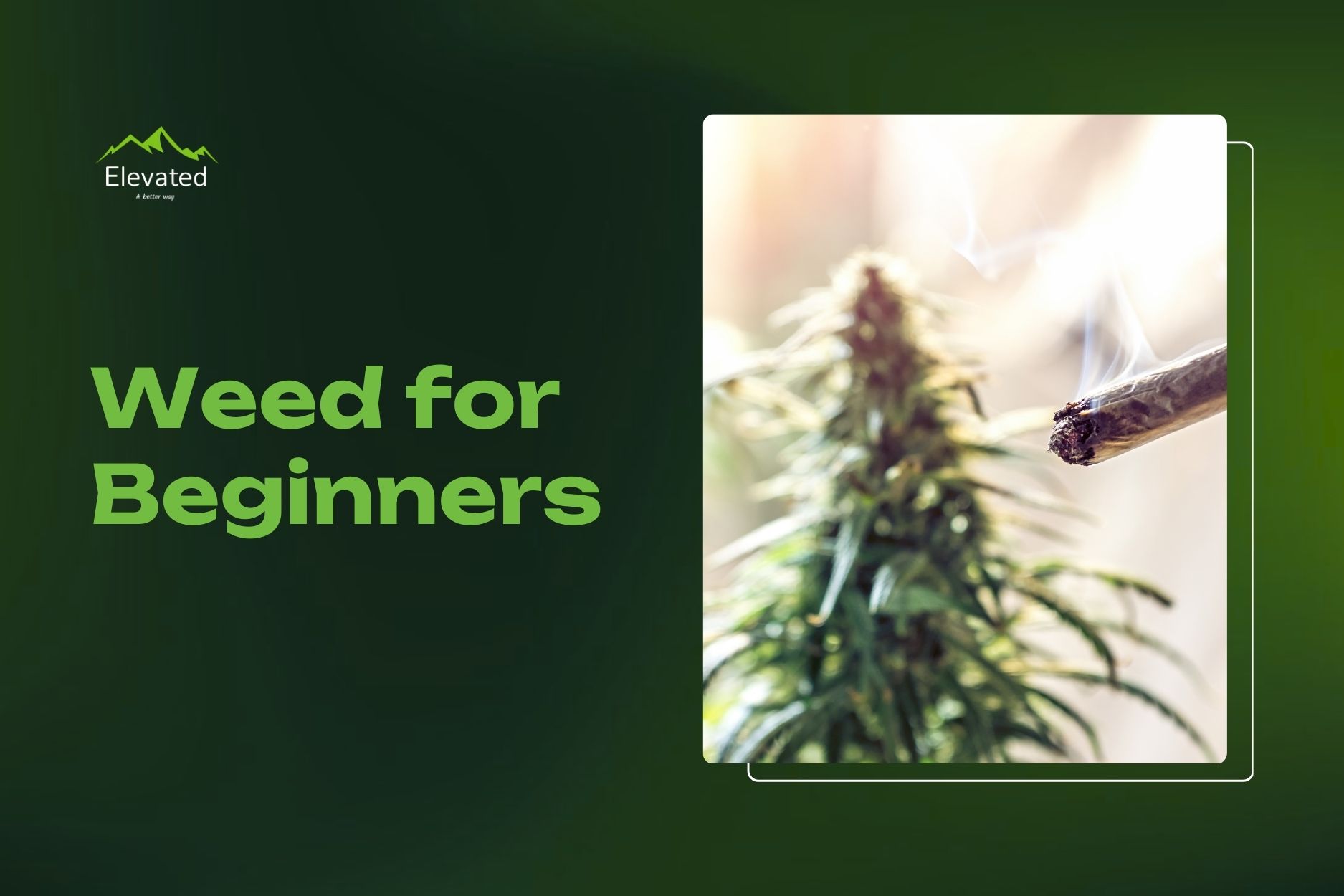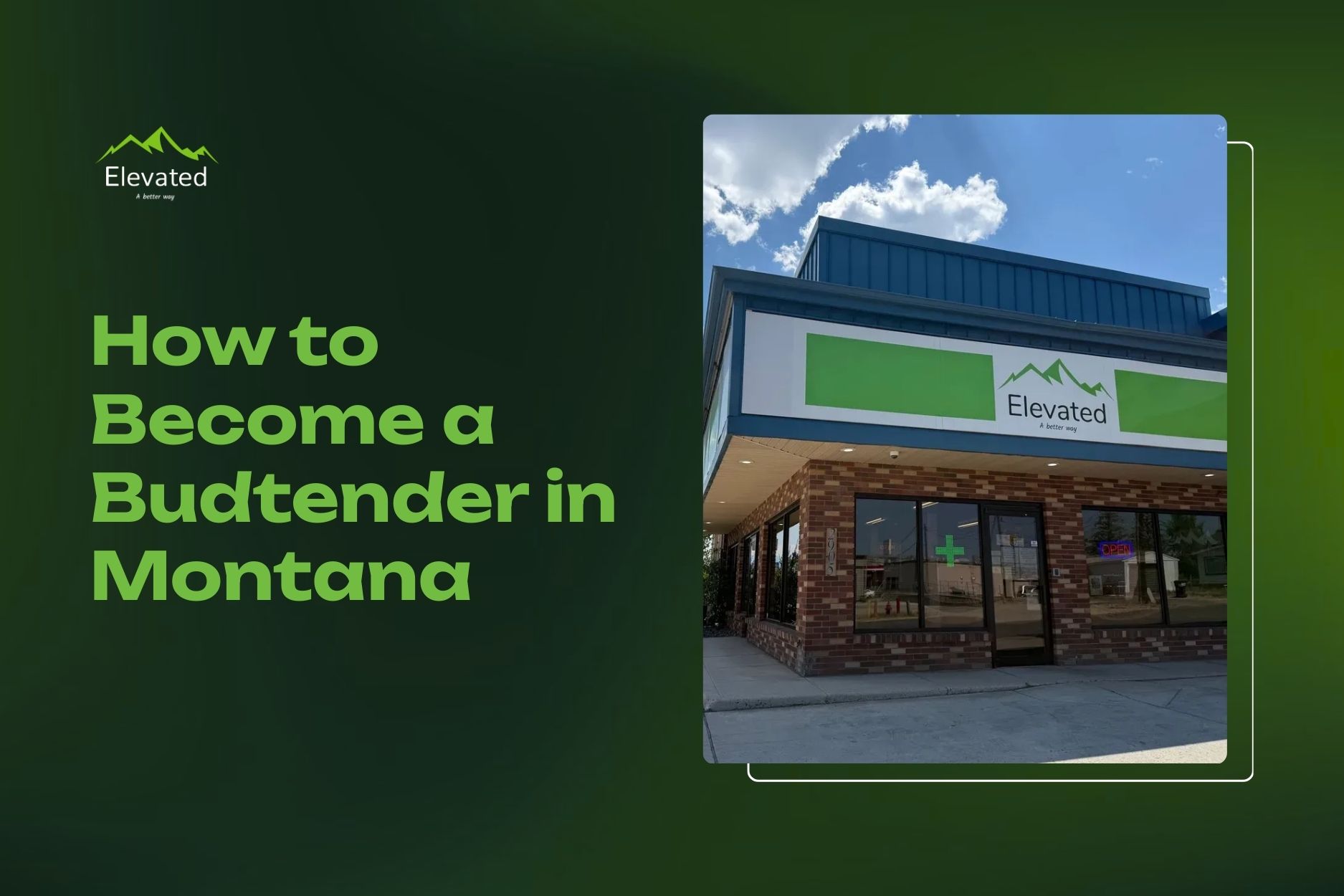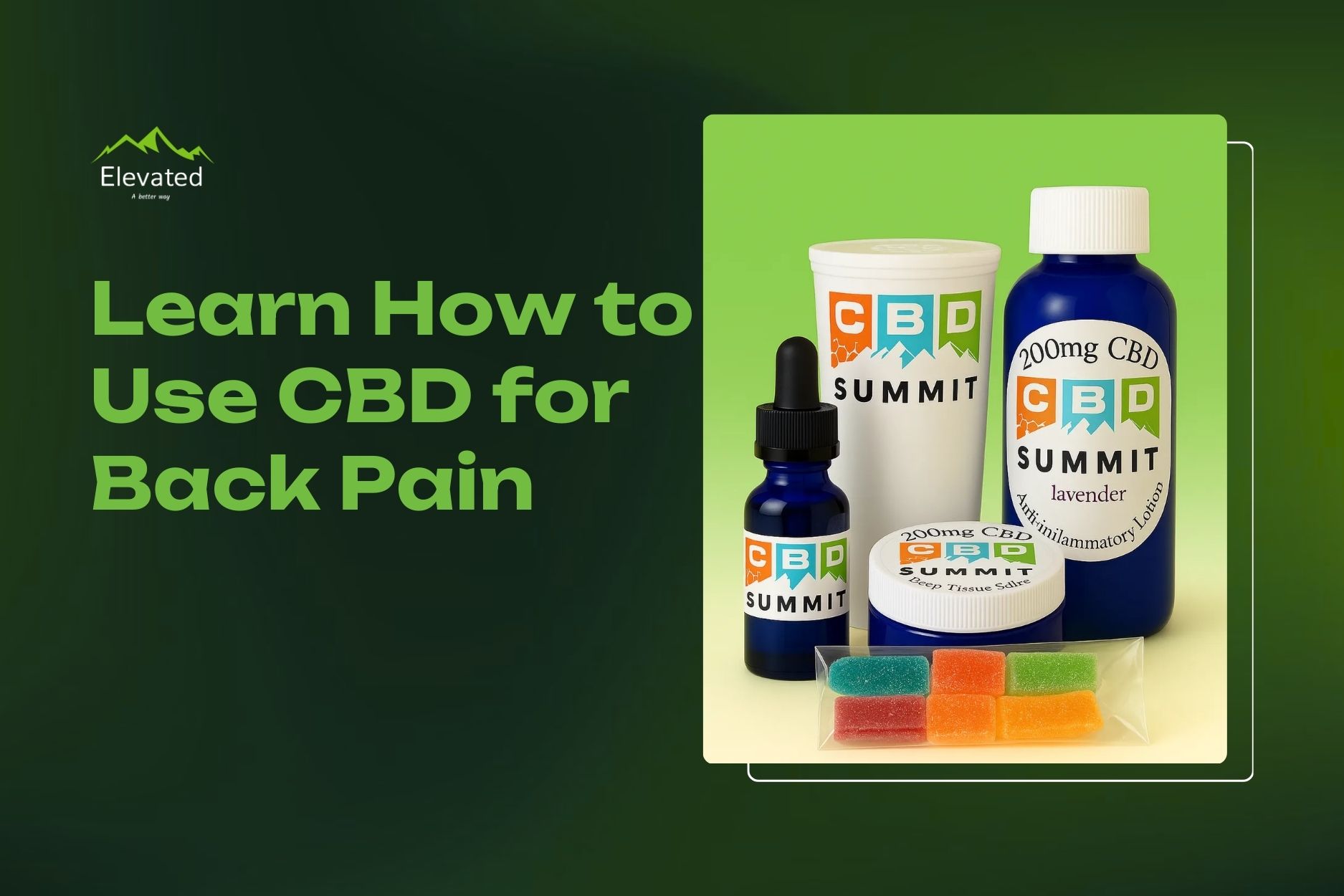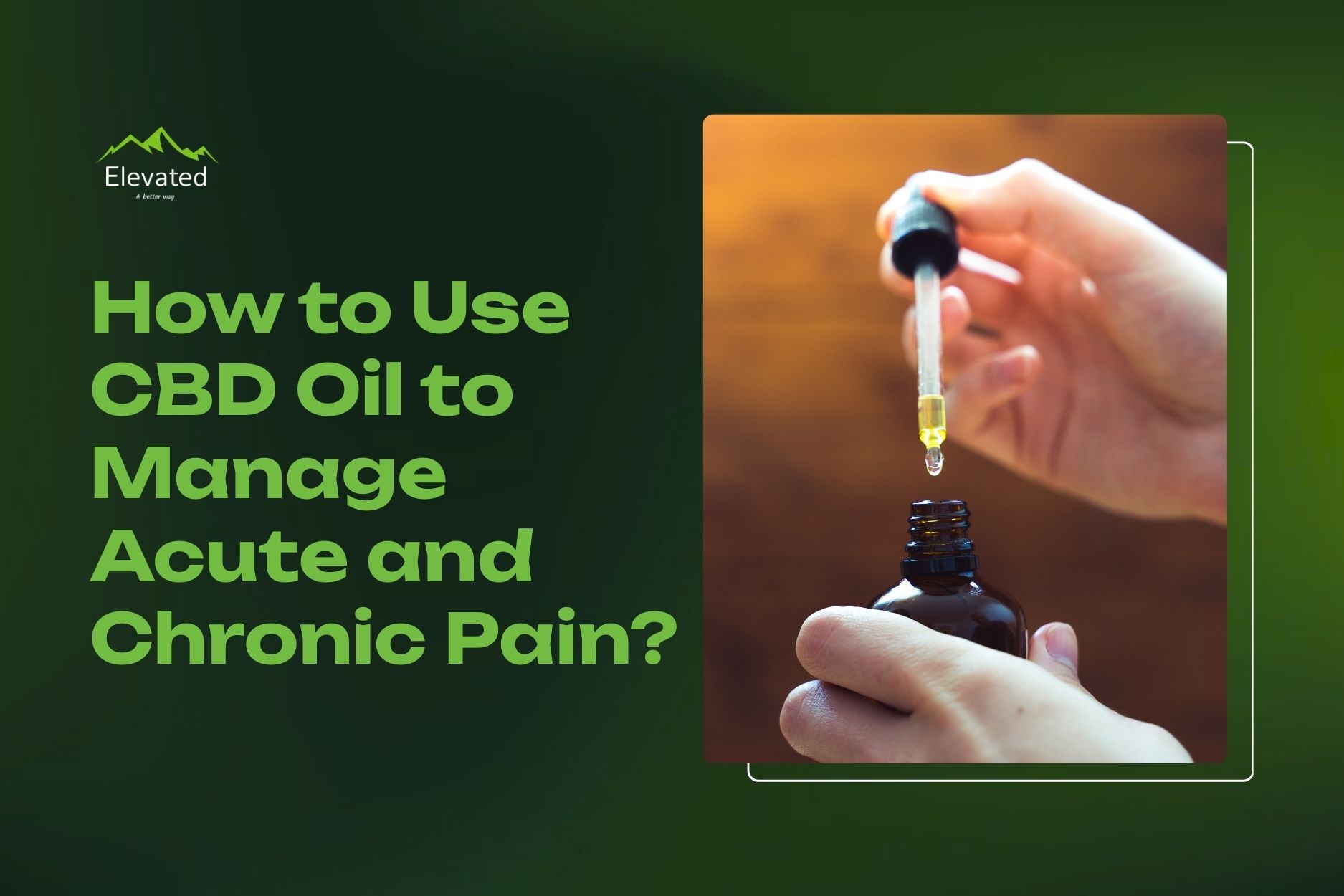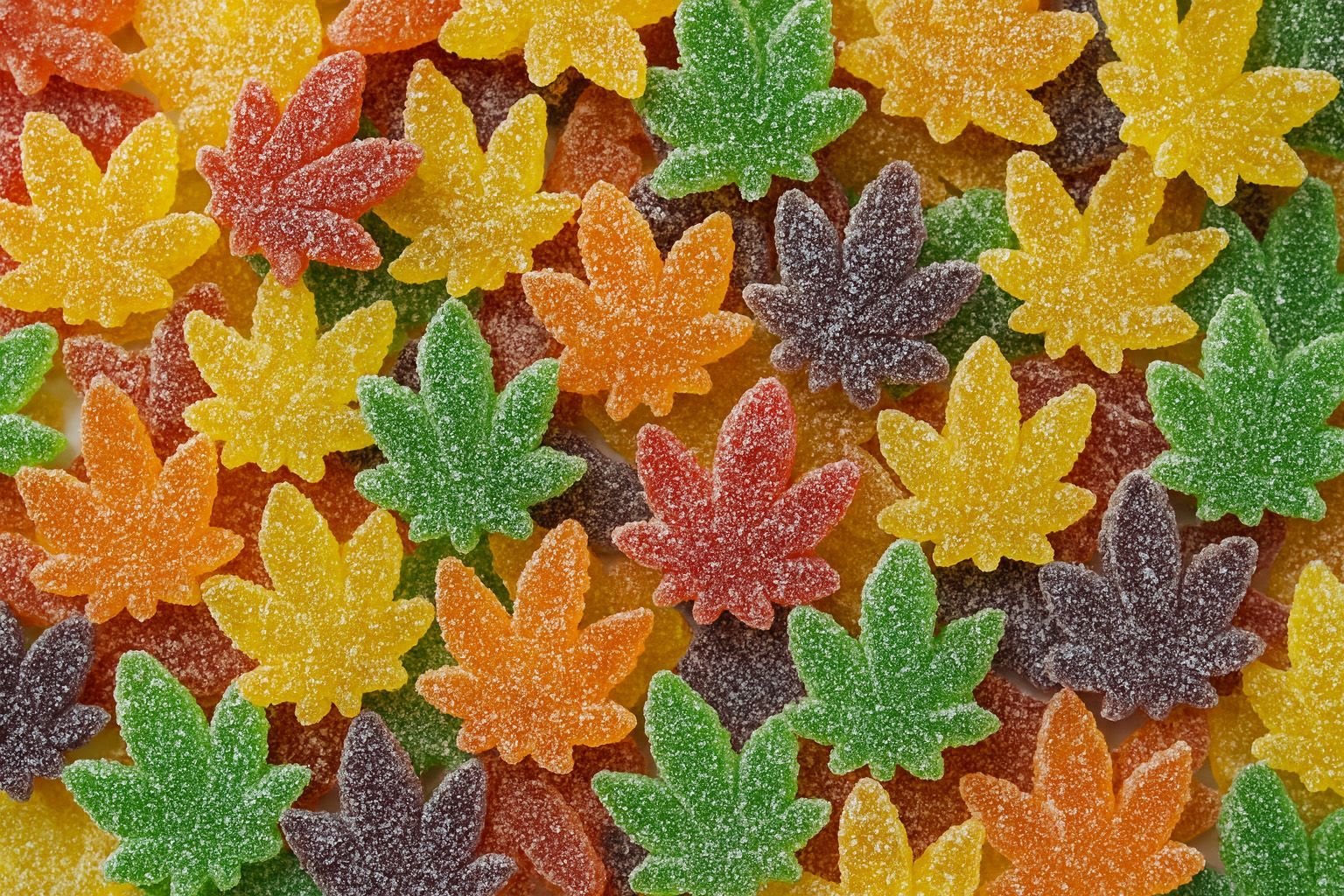Montana Hemp Laws 2025: What’s Legal & What Isn’t
Hemp is legal in Montana if it contains ≤0.3% THC, but House Bill 49 (2025) set strict caps of 0.5 mg THC per serving and 2 mg per package. Licenses are required to grow or process hemp, and smoking is prohibited indoors under the Clean Indoor Air Act.
Key Points:
- Hemp = legal at ≤0.3% THC by dry weight.
- HB 49 (2025) capped products at 0.5 mg THC/serving and 2 mg/package.
- Montana Department of Agriculture license required for growing/processing.
- No smoking hemp indoors (Clean Indoor Air Act).
- Always check labels for total THC and a valid COA.
- Transport requires documentation (bill of lading + license).
- Tribal lands may follow separate hemp rules.
At Elevated, our budtenders make these complex rules easy to understand, guiding you toward compliant hemp products that fit your lifestyle without the legal confusion.
Keep reading to learn exactly what Montana’s hemp laws mean for shoppers, growers, and travelers and how Elevated helps you stay compliant while finding the right fit.
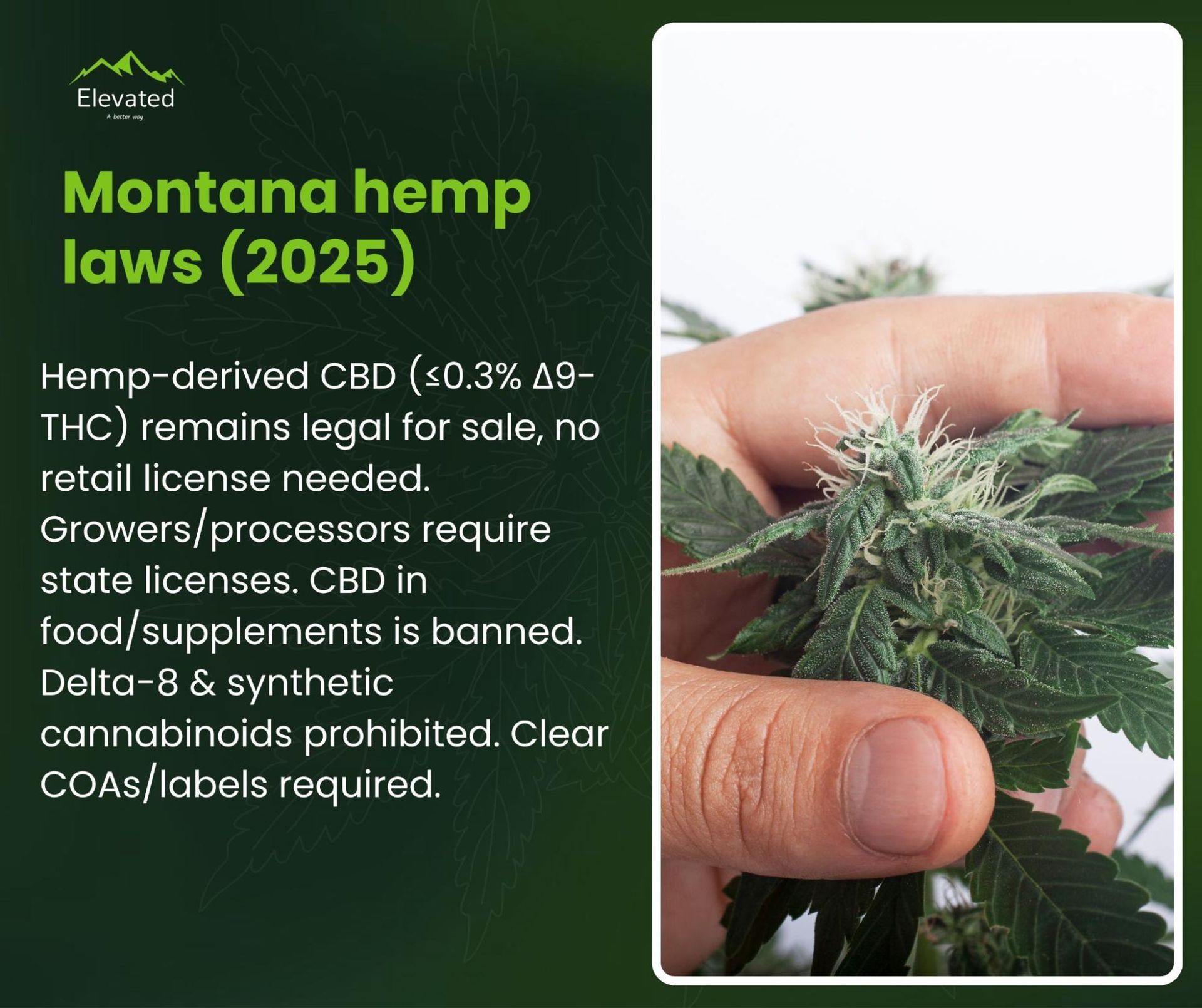
Montana Hemp Law
In Montana, hemp is legally defined as cannabis containing no more than 0.3% THC by dry weight, a threshold set at the federal level in the 2018 Farm Bill and adopted into state law. That single number draws the bright line between hemp (legal with a license) and marijuana (regulated under the state’s adult-use and medical programs).
As of May 6, 2025, Montana tightened the screws with House Bill 49 (HB 49). Hemp products sold here can now contain no more than 0.5 milligrams of THC per serving and 2 milligrams of THC per package, regardless of whether that THC is delta-8, delta-9, or another variant. What this means in practice: the 25 mg “CBD gummies” that are widely available online in other states often won’t make the cut on Montana shelves.
How Montana Hemp Law Works / Core Mechanics
Hemp oversight runs through the Montana Department of Agriculture (DOA) under a USDA-approved state hemp plan. Anyone who wants to grow or process hemp must apply for a DOA license, pay fees, and comply with strict testing and reporting rules. Farmers submit planting reports, lab samples, and harvest data to prove crops remain under 0.3% THC.
For consumers, HB 49 reshaped the retail landscape. Stores must ensure hemp edibles meet the serving/package caps, labels include total THC calculations, and products carry a valid certificate of analysis (COA).
Shipping hemp into Montana?
It must travel with a bill of lading and proof it was grown under a licensed program; paperwork matters if you don’t want a truckload of “legal hemp” held up at the state line.
Legal Definitions & THC Limits
The foundation of Montana hemp law is precise THC thresholds. Hemp must remain under 0.3% THC by dry weight during cultivation, and as of HB 49 (2025), finished products must not exceed 0.5 mg THC per serving and 2 mg per package. This is where many consumers get tripped up.
Does Montana ban delta-8 THC in hemp?
Not outright, but by capping THC content so tightly, delta-8 edibles and similar products are effectively restricted. A 10 mg gummy sold in another state might look harmless, but in Montana it would be considered non-compliant hemp, or possibly regulated marijuana.
Why this matters: Whether you’re a shopper or a grower, knowing these numbers is the key to staying compliant and avoiding confiscations, fines, or wasted inventory.
Licensing & Compliance Oversight
Hemp in Montana is overseen by the Department of Agriculture’s Hemp Program, operating under a USDA-approved state plan. Success here depends on:
- Licensing: Growers and processors must apply annually, pay fees, and renew on time.
- Testing: All crops are sampled before harvest to confirm THC levels remain compliant.
- Paperwork: Hemp shipments require a bill of lading and proof of license.
Can you grow hemp in Montana without a license?
No. Any unlicensed hemp cultivation is considered illegal cannabis cultivation under state law. For small farmers, this means paperwork is just as important as planting seeds.
Consumer Protections & Shopping Guidance
For everyday Montanans, hemp law success means safe, clear, and compliant access. HB 49 introduced labeling requirements designed to protect buyers:
- Labels must show total THC per serving and per package.
- Products should come with a certificate of analysis (COA) from a licensed lab.
- Claims about medical benefits must be avoided; hemp shops and dispensaries are barred from making unverified health promises.
HB 49 & the “Serving Math” Problem
One of the trickiest updates came with HB 49 (2025). It didn’t just set a cap, it forced shoppers and brands to rethink serving sizes and package math:
- 0.5 mg THC per serving
- 2 mg THC per package
What does that mean in practice? A gummy with 10 mg of hemp-derived delta-9 (perfectly fine in Oregon or Colorado) is non-compliant in Montana. Even a bag of 10 gummies at 0.5 mg each could cross the 2 mg package cap.
Pro Tip: Look for lab-tested microdose products or tinctures clearly marked with Montana-compliant THC math.
Where You Can & Can’t Use Hemp Products
Montana’s Clean Indoor Air Act applies to hemp too. That means:
- No smoking or vaping hemp inside bars, restaurants, or public indoor spaces.
- No smoking in vehicles, including work trucks and rideshares.
- Private property and outdoor areas (where smoking is generally allowed) are fair game.
Many visitors assume hemp doesn’t carry the same restrictions as marijuana. Not so, light up in the wrong place, and you could face the same fines as a cannabis smoker.
Transport & Interstate Nuances
Yes, you can transport hemp through Montana, but there are rules:
- Always carry a bill of lading and a copy of your hemp license (or supplier’s).
- Hemp must be clearly labeled as compliant with the 0.3% THC federal threshold.
- Law enforcement confusion still happens, especially with hemp flower, which looks identical to marijuana.
Best practice: Keep COAs and invoices on hand, whether you’re a farmer hauling biomass or a consumer carrying flower across county or state lines.
Delta-8 & Novel Cannabinoids in Montana
Delta-8, THCA, and other hemp-derived cannabinoids live in a legal gray zone. HB 49 doesn’t ban them outright, but its strict mg caps per package effectively eliminate intoxicating hemp edibles from retail shelves. Oils, tinctures, and CBD-dominant products are the safer bet for compliance.
HB 49 in Real Life: Serving Math Made Simple
Most guides will tell you the law, but few break it down in a way that matters to you at the checkout counter. At Elevated, we’ve seen the confusion firsthand:
- A gummy that’s compliant in Colorado (10 mg THC) is 10x over Montana’s serving cap.
- Even a “microdose” pack might accidentally exceed Montana’s 2 mg per package cap.
Our budtenders are trained to do the math with you. We’ll show you how to read the label, find compliant products, and avoid surprises at the register.
CBD at Dispensaries? Clearing Up the Confusion
Here’s the truth: not every Montana dispensary carries hemp CBD. That’s because the state historically kept hemp and marijuana markets separate.
- Some stores sell only marijuana-derived products.
- Hemp CBD might be found at health shops, grocery chains, or specialty boutiques.
Elevated’s edge: If you’re looking for non-intoxicating relief, our team won’t just push THC. We’ll walk you through CBD-forward alternatives, explain compliance, and help you shop by effect, not just by % numbers.
Tribal & Jurisdiction Nuances
Hemp law in Montana isn’t always statewide; tribal nations may have their own hemp plans approved by USDA. That means:
- Rules on tribal lands may differ from the surrounding county.
- Licensing authority can shift depending on jurisdiction.
With deep Montana roots, we respect tribal sovereignty and guide visitors to check local tribal rules before assuming state law applies.
Quick-Start Checklist
Before you buy, sell, or grow hemp in Montana, make sure you:
- Know the current THC caps (≤0.5 mg per serving, ≤2 mg per package).
- Check the label for a COA (certificate of analysis), total THC, serving size, and package count.
- Understand where smoking is prohibited (public spaces, vehicles, workplaces).
- Carry required documents if transporting hemp (bill of lading + copy of license).
- For growers/processors: apply through Montana Department of Agriculture (DOA) with fees paid and plan approved.
Budget, Risks, and Compliance Notes
- Budget: Tinctures and topicals often deliver more relief per dollar than gummies.
- Risks: Out-of-state online orders may exceed Montana’s strict THC-per-serving limits and risk seizure.
- Compliance: Always read labels, ask for a COA, and remember, Montana law is stricter than most states after HB 49.
Next Steps & Resources

If you’re still unsure which hemp product fits your lifestyle under Montana’s updated laws, the best move is simple: Talk to a trusted budtender. Elevated’s education-first team is trained to decode labels, explain HB 49 limits in plain English, and help you find compliant options that fit your goals, whether that’s sleep, stress relief, or post-hike recovery.
Where to Go From Here
- Check labels before you buy, look for ≤0.5 mg THC per serving, ≤2 mg per package, and a current COA.
- Visit an Elevated location near you, staff can help compare compliant tinctures, topicals, and edibles.
- Follow state resources, bookmark the Montana Department of Agriculture’s hemp plan for licensing and product updates.
Disclaimer
This guide is for educational purposes only. It does not provide medical, legal, or financial advice. Hemp laws and regulations in Montana may change, and enforcement can vary by county or jurisdiction. Always verify details with the Montana Department of Agriculture, the Montana Department of Public Health & Human Services, or legal counsel before making decisions about hemp cultivation, purchase, or use. Elevated provides education-first guidance but does not substitute for official regulatory or medical advice.
References
- Montana Department of Agriculture. (2025). Hemp program: Licensing, testing, and compliance. https://agr.mt.gov/hemp
- Montana State Legislature. (2025). House Bill 49: Hemp product THC limits. https://leg.mt.gov
- Montana State Legislature. (2001). Senate Bill 261: Industrial hemp recognition. https://leg.mt.gov
- U.S. Department of Agriculture. (2025). USDA-approved state hemp production plans. https://www.ams.usda.gov/rules-regulations/hemp/state
- Montana Department of Public Health & Human Services. (2025). Clean Indoor Air Act guidance: Smoking and vaping restrictions. https://dphhs.mt.gov
